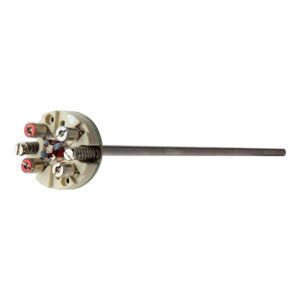
What is a pt1000 resistance thermometer?
- July 20, 2020
- , 7:56 am
- , Blog
A pt1000 is a type of resistance thermometer. Just like the pt100, this resistance thermometer measures temperature using electrical resistance. So a pt1000 resistance thermometer is one type of temperature sensor. A temperature sensor, in general, provides for temperature measurement through an electrical signal. It measures the temperature or heat on the operating machine part. As you can imagine, temperatures can rise high when it comes to machines. That’s why it’s crucial to keep track of this. That’s also the reason why temperature sensors are commonly used devices. They come in a lot of different models. Out of these, the pt1000 resistance thermometer is one of the most popular ones.
Why the name pt1000?
Pt1000 resistance thermometers got this name because of the resistance of the wires. This means that the resistance on a Pt1000 thermometer is 1000 ohm for 0°C. So let’s start with some background information. Resistance thermometers in general measure temperature using electrical resistance. A resistance thermometer doesn’t show temperatures, but the amount of resistance in ohm that belongs to a temperature. This relationship is linear and in general very accurate. In industry, Pt100 or Pt1000 resistance thermometers are the most popular ones. The resistance on a Pt100 thermometer is 100 ohm for 0°C, for a Pt1000 this resistance is 1000 ohm for 0°C.
How does a pt1000 work?
But how does this process inside a pt1000 work? The center of such a thermometer contains a measuring resistance sensor. When temperature changes, the electrical resistance in this pt1000 sensor increases or decreases. Pt1000 resistance thermometers are usually used to measure lower temperatures between 0 and 100°C. In this range, the pt1000 has superior accuracy.
Different types
In the basis, there are two types of pt1000s. They differ from each other based on the core:
- Thin film resistance pt1000. These are smaller in size and have a high vibration resistance. Nowadays, thin film resistance thermometers are the standard. Provided that they aren’t excluded based upon temperature range. This type is suitable for the range -50°C to 500°C, but is in principle mostly used for lower temperatures as mentioned above.
- Wire wound resistance pt1000. These resistance thermometers are suitable for a temperature range of -200°C and 600°C.
When is a pt1000 used?
A pt1000 is used to measure the temperature of a medium. It differs from a regular thermometer because it does not have a readable scale. Also, a pt1000 doesn’t contain moving parts and can be read from a distance. This allows you to place it in a place that’s hard to reach. The signal the pt1000 sends can be used for a lot of different measuring purposes. Pt1000s are standard 2-wired configurations, which makes them very affordable. This does however mean that they become more unreliable and more prone to breaking when used in higher temperatures.
At last, which to use?
Like with most measuring instruments, a lot of factors influence the total process when it comes to pt1000s. That’s why it can be quite complicated choosing which model pt1000 to use. Luckily for you, our TUVO Instruments experts are happy to help you out! So don’t hesitate and ask for their advice.
